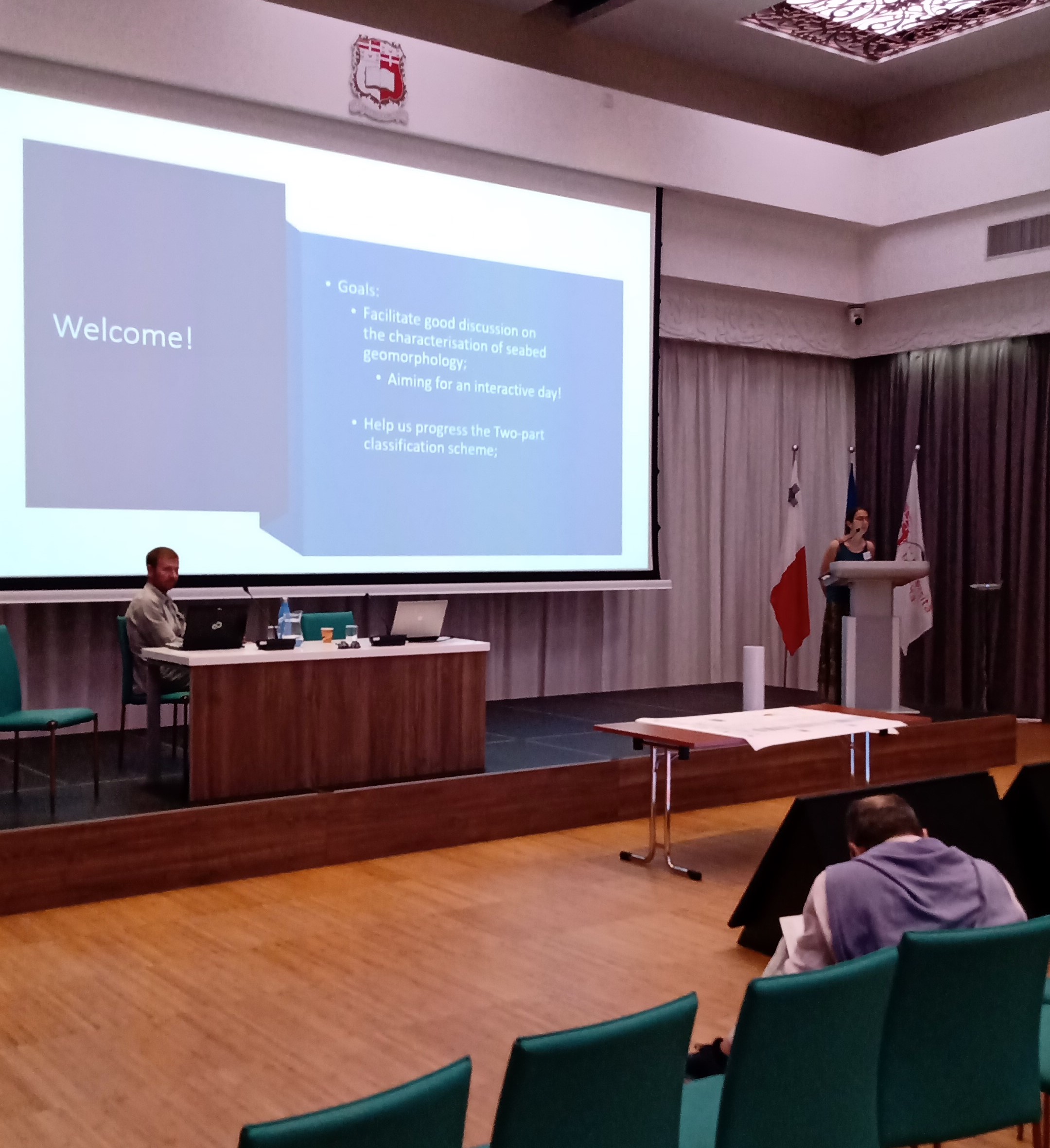The MIM-GA Workshop on Marine Geomorphology Classification – La Valletta, Malta, July 2022

Ric provides us with an update on his recent visit to Malta
The Mareano-Infomar-Maremap (Norwegian Geological Survey, GSI and the British Geological Survey) - Geoscience Australia (MIM-GA) group, represented by Rachel Nanson (GA), Joana Gafeira and Dayton Dove (BGS) and myself (UCC), has hosted a workshop at the International Conference on Seafloor Landforms, Processes and Evolution last July in Malta, where we have invited setting specialists (e.g. mass movement, coastal, fluvial geomorphologists) to provide input to the second part of a standardised two-part classification scheme of the seabed. Part 1 of this scheme (Morphology: Dove et al., 2020b) standardised the terminology that is used to classify the surface form of the seabed (i.e. from bathymetry datasets) through the provision of glossaries of features. The workshop was focussed on the second step in this approach (Part 2: Geomorphology), which similarly utilises well established geomorphology classification schemes to assign a geomorphic origin to morphological features (Part 1: Morphology) on the basis of further seabed and subsurface data, and expert interpretation of formative processes.
The workshop was successful as it prompted much lively conversation, and good detailed discussions. There was also general enthusiasm and support for the ambitions of the MIM-GA group. Nonetheless, we were not surprised to discover that if you invite 50 geomorphologists in a room, they will have strong opinions on how features should be structured and named. Plenty of constructive criticism was provided by the participants: in part people felt that a few important aspects were missing, they pointed out inconsistent usage of terms between disciplines and where classification trees needed to be re-organised.
The MIM-GA team is now regrouping and assessing the outcome of the workshop. We plan to modify and hone the scheme following the feedback as well as keeping the engagement with the community and experts. In the next months we intend to draft a second version of Part 2 Geomorphology, and hopefully to make it available soon to everybody.
References
Dove, D., Bjarnadottir, L., Guinan, J., Le Bas, T., Nanson, R., Roche, M., Lecours, V., Stephens, D., Walbridge, S., Khadjinova, R., Di Stefano, M., Dolan, M., Debese, N., Jacq, J.J., Harris, P., Lamarche, G., Ryabchuk, D., 2020a. Seafloor Geomorphology (GeoHab Workshop); Key Resources and Future Challenges, GeoHab-2019 Conference, St. Petersburg. Zenodo, http://doi.org/10.5281/zenodo.3654320.
Dove, D., Nanson, R., Bjarnadóttir, L.R., Guinan, J., Gafeira, J., Post, A., Dolan, M.F.J., Stewart, H., Arosio, R. and Scott, G., 2020b. A two-part seabed geomorphology classification scheme:(v. 2). Part 1: morphology features glossary. https://zenodo.org/record/4071940
Marine Geosciences Research Group
University College Cork
Contact us
School of Biological, Earth and Environmental Sciences, North Mall Campus, University College Cork, North Mall, Cork City, T23 TK30
